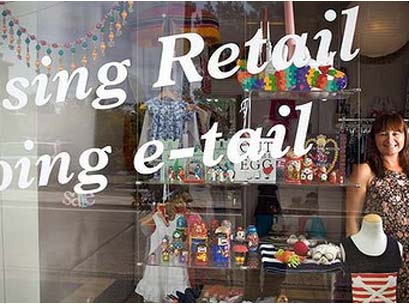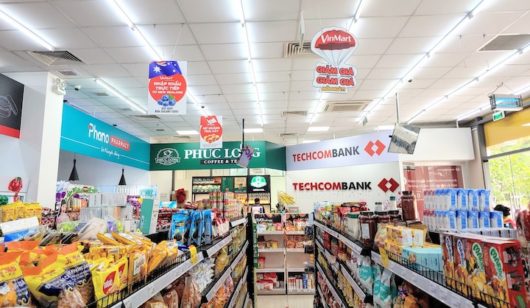In recent times there is much noise in the media about “the worst ever” retail times and many retailers and retail experts have many theories or should that read excuses, as to why this is happening?
CEOs at shareholder meetings and in television interviews start their explanation on poor trading with the phrase “in all my retail experience I have never experienced such difficult times”.
This statement is followed by reference to the global financial crisis, price wars, rising rents and salary costs and of course the latest “bogeyman” is the dreaded boom in internet selling! Retail is evolutionary and at times revolutionary and because of this there have always been changes in the retail environment. The doom and gloom prophets continually pop up but good retailers move with the times and survive.
Over the decades there have been monumental shifts in retail influences. Television changed the way in which retailers could market products and services but you needed a big marketing budget to participate. The creation of mass merchants and in the late 1960’s and 1970’s irrevocably changed the dynamics of retailing introducing lower prices in a self-serve format. Next on the scene was the Hypermart combining food and general merchandise which gave the shopper all their basic needs under the one roof and again offered price savings. The Category Killers arrived threatening to “kill” the small “Mum and Pop” retail stores.
Starting in the mid 1970s, information technology had a powerful influence on business financial planning, control and merchandising analysis. Retailers who saw the value of timely data and could afford to implement the technology gained a market advantage. International retailers brought both additional competition and in many instances new standards in operations, putting pressure on the local retailers to keep up or lose market-share.
Now we have the internet and this is changing the way in which retailers promote and sell products. On-line shopping is understandably one of “the” major threats to traditional store retailing today and once again the key motivators are convenience linked with lower price.
From the past we have learnt that even in the tough times good retailers can and do survive. When Target and Kmart arrived on the Australian retail scene in the late 1960’s/ early 1970’s it was first argued they would fail because customers had been conditioned to full service so it was presumed they would not accept the “self-serve” retail format. Once it became clear the customer would change retail habits if they could save money, then it was widely believed this new low cost shopping format would severely damage Department Stores and many small retailers would fade into oblivion.
Why? The answer was simply based on lower price! Why would the customer pay a higher price for the same item elsewhere if it could be purchased for considerably less in Target or Kmart?
Retail is basically a simple challenge that revolves around knowing your customer, knowing your market, being financially competent, thinking and planning ahead and most of all being able to embrace “the right change” at “the right time”.
Knowing what will be “the right change” is a critical step in a retail survival strategy because making “the wrong change” can be disastrous. An example of this is seen in some Department Stores where decline and potential demise have been flashing the warning lights for decades. Some of the “business experts”, (CEOS and Boards) took a black and white clinical approach to managing the bottom line by reducing costs to offset the loss of sales and profit caused by decreasing turnover and declining margins.
Easy action was to reduce range structure, cut back on the number of service staff, chase higher margin items and reduce investment in training service standards. Now I read one of the reasons for customer dissatisfaction with the Department Store shopping experience is the lack of customer service in both the number and quality of staff. Reducing service staff numbers and allowing service standards to deteriorate appears to have been “the wrong” survival strategy.
In recent years there are retailers who have engaged in a strategy of “protect at home and conquer the neighbors”. Could this be an example of one of “the right” survival strategies? The world is indeed becoming a smaller marketplace and a retailer who gets a foothold offshore in the right market is building a foundation upon which to gain future growth.
Where better is there to expand than the Asian market considering it is experiencing phenomenal retail growth, and not just in China and India. Vietnam, Indonesia, Thailand, Malaysia and the Philippines are all experiencing huge increases in number of “store doors” and “bills in the tills”. This will continue for decades to come.
Harvey Norman is an example of a retailer who rather than making excuses in tough times will “think outside of the box” and attack the market with new initiatives. Some years ago, through strong leadership and vision, Harvey Norman developed a strategy for entering the Asian market. It commenced retailing in Singapore and has now successfully moved into Malaysia. You can be sure it already has Vietnam, Indonesia and the Philippines in its sights.
Starting years ago was a very smart move when you remember back then Asia was not being talked about as it is today. Harvey Norman realised that entering an Asian market required time and by starting early it was already a huge step ahead of the competition. Harvey Norman also was astute enough to understand the importance of being in accord with the local business, financial, social, religious and cultural behaviors. Of course there would have been some mistakes experienced along the way but it appears nothing that caused any significant setback. In this example it seems “the right change” strategy has been embraced.
On the subject of today’s “retail devil” which is on-line “pick and click” shopping, traditional retailers need to come to grips with the fact it is here to stay. This modern day retail format will grow given the ease of shopping whenever and wherever there is an internet connection for the computer, laptop, cell phone, pad or tablet.
Conventional retailers will not be able to compete on price and the consumer will choose to buy the same item on line at a lower price, (sounds like the same problem that was experienced when the mass merchants entered the market, doesn’t it?). This is indeed a formidable challenge to conventional retailing. This does not however mean it is the end of all “bricks and mortar” retailing.
Technology has hit some retailers with devastating impact. Digital photography and the computer have eliminated the traditional approach to recording memories. The internet has been equally as devastating to the traditional retailing of books, CDs, newspapers, the delivery of flowers and the list just keeps on growing.
Look forward and image what impact technology and the internet could have on movie theatres. It is possible that all homes will have mega size TV screens supported with 3D technology, full theatre dimensional sound system and all this linked to the computer to access all the latest movies. Just add popcorn and enjoy movies at home, so who will bother to visit the local cinema complex. Should the theatre owners be planning their “survival strategies” now? Yes!
Traditional retailers, too, need to create “survival strategies” that are logical and defendable in today’s retail environment. These strategies can compete direct against on-line sales by entering the same format or can be an alternative market driven strategy such as that used by Harvey Norman in expanding in the Asian market.
One thing can be guaranteed: on-line retailing is just another milestone on the history of retail timeline. For survival, all retailers in all retail formats must always look to the future with an open mind and brutal honesty.
The concept of having “the right product” at “the right price” with “the right quantity” in “the right place” at “the right time” and with “the right service level” is the starting point for creating a successful retail strategy. All retailers must be prepared to test themselves against each of “the right” elements and if this is done with an open mind and honest appraisal it is possible to implement a strategy for survival.
FOOTNOTE: If internet shopping does see the demise of many retailers, what will happen to the vacated retail space? What will be the impact on rent rate? Are landlords preparing their “survival strategies”?
InsideRetail.Asia columnist Darrell Wisbey has 30 years retail experience, living and working in Australia and Asia. He is based in the Philippines and a member of Impact Retailing. Email Darrell.






